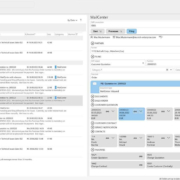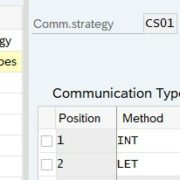Archiving Outlook emails – Why is it important?
Archiving mails – There are many reasons why you should bother with archiving emails. E-mails contain valuable business information that must be retained to comply with legal requirements and compliance rules. In addition, e-mails can be used as evidence in legal proceedings. Proper email archiving can also help keep track of business communications and decisions , and enable more efficient searches and recoveries.
A good archiving solution can also help optimize storage space in the email system and ensure data security and integrity. In short, email archiving is an important part of an effective information management strategy.
In this article, we’ll focus on how to keep track of business communication in Outlook .
Keeping track of incoming e-mails – not just a question of archiving
Keeping track of incoming emails (not just in Outlook) can be challenging, especially if you receive a high number of emails. Here are some tips that can help you stay on top of things:
Use rules: Use rules or filters in your email client to automatically organize and categorize emails. For example, you can create rules to move emails from specific senders to a specific folder.
Use folders: Use folders to group emails by project, topic, or sender. This can help you quickly find the email you want when you need it.
Use search functions: Use the search function in your email client to search for specific emails or keywords.
Use a calendar: Use a calendar to keep track of important email appointments and reminders. This can help you not miss important emails.
Unsubscribe: Unsubscribe from unwanted email lists to clean and simplify your inbox.
Archive emails: Archive emails that you no longer need but need to keep to free up inbox space and stay on top of things.
By applying these tips, you can keep track of your incoming emails and ensure that important messages are not overlooked. However, it’s important to find a method that works best for you and your work style to ensure effective and efficient management of your email.
Archive e-mails in Microsoft Outlook
Microsoft Outlook offers a number of ways to archive e-mails. Here are some of them:
Archiving emails: With Outlook, you can archive emails to clean up your inbox and keep track. You can set when and how often archiving should take place, and select specific folders and emails to be archived.
Automatic archiving: With Outlook, you can set up automatic archiving to automatically archive emails after a certain period of time or according to certain rules.
To import and export emails: With Outlook, you can import and export emails to back them up or transfer them to another computer.
Using .pst files: Personal Storage Table (PST) files can be used in Outlook to archive and organize emails. PST files can be stored on the computer and provide an additional way to archive emails.
Third-party tool integration: Outlook can also integrate with third-party archiving tools to provide advanced archiving functionality.
Overall, Microsoft Outlook offers a variety of ways to archive emails, allowing you to effectively manage your emails and keep track. However, it is important to choose the appropriate method for your needs to ensure efficient archiving.
Archive emails manually vs. Archive emails automatically
Manual archiving of emails refers to manually moving emails to folders or PST files, while automatic archiving relies on the use of rules and filters to automatically archive emails. Here are some advantages and disadvantages of both methods:
Advantages of manual archiving:
Overview: Because you have control over moving emails manually, you can better control the organization and classification of your emails and stay on top of things.
Flexibility: You can manually move emails whenever you want and customize the archiving system according to your needs.
Disadvantages of manual archiving:
Time-consuming: Moving emails manually can be time-consuming, especially if you receive a large number of emails.
Error-prone: There is a risk that emails may be accidentally moved to the wrong folder or lost.
Advantages of automatic archiving:
Time saving: The automatic archiving of e-mails saves time because the rules and filters automatically move the e-mails.
Efficiency: Because the system works automatically, there is less risk of human error.
Disadvantages of automatic archiving:
Error susceptibility: Errors can occur when setting up rules and filters, which can lead to insufficient archiving.
Inflexibility: Once set up rules and filters can be more difficult to change.
Costly: Setting up the online archive of Microsoft Outlook is complex and time-consuming. Even experienced administrators despair of this.
Overall, the choice between manual and automatic archiving depends on your needs and preferences. It is important to understand both methods in order to find the best solution for your needs.









